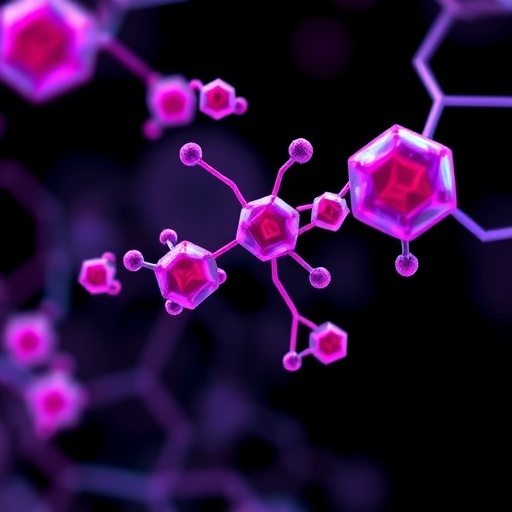Recent advancements in cancer research have unveiled promising biological targets in the relentless battle against malignancies. One such target, ALDH1B1, has gained significant attention due to its potential role in tumor biology and progression. This review integrates recent findings and projects into the prospects for ALDH1B1 as a viable anticancer target, setting the stage for understanding its implications in therapeutic approaches and cancer management.
ALDH1B1, or aldehyde dehydrogenase 1B1, serves as an enzyme involved in the metabolism of aldehydes, critical in various cellular processes. Its primary function lies in converting toxic aldehyde substrates into non-toxic carboxylic acids, leveraging a critical biochemical pathway for cell survival and homeostasis. The enzyme’s expression has been observed to correlate with stem-like properties in cancer cells, suggesting an intriguing link between ALDH1B1 activity and cancer stem cell maintenance and tumor aggressiveness.
Recent studies have demonstrated a consistent pattern of elevated ALDH1B1 expression in a range of cancers, including breast, liver, and colorectal malignancies. This ubiquity raises essential questions about the enzyme’s role in carcinogenesis and tumor progression. Elevated levels of ALDH1B1 have been associated with poor prognosis and treatment resistance, indicating that cancer cells may exploit ALDH1B1’s metabolic functions to enhance their survival under therapeutic duress.
The implications of ALDH1B1’s enzymatic activity extend beyond mere metabolic alterations. Emerging evidence suggests that these enzymes may modulate the tumor microenvironment, influencing cellular interactions and immune evasion strategies adopted by cancer cells. By manipulating metabolic pathways, ALDH1B1 could facilitate the dynamic adaptation of tumors in response to stressors, including chemotherapy and immunotherapy.
Understanding the molecular underpinnings of ALDH1B1 has led to exciting research avenues exploring the enzyme’s inhibition as a therapeutic strategy. In vitro and in vivo studies utilizing small molecule inhibitors specifically targeting ALDH1B1 have yielded promising results. In particular, the combination of ALDH1B1 inhibition with existing treatments has shown enhanced efficacy, potentially improving the outcomes for patients with aggressive cancer phenotypes.
Future research must delve deeper into the mechanistic pathways governed by ALDH1B1 to uncover precise biochemical interactions and regulatory networks involved. Identification of downstream targets influenced by ALDH1B1 may illuminate novel druggable pathways. As research progresses, scientists aim to unveil additional insights that could refine the existing therapeutic paradigms and incorporate ALDH1B1 inhibition as a standard approach in treatment protocols.
Moreover, the therapeutic implications are further complicated by the existence of isoforms and related family members within the ALDH gene superfamily. Distinguishing the roles played by specific isoforms in various cancer types could provide clarity on the precise target for intervention. Personalized medicine approaches may leverage the specific expression profile of ALDH1B1 and its isoforms in individual tumors to enhance treatment precision and efficacy.
An exploration of ALDH1B1 as a biomarker holds significant promise as well. Given its association with stem cell-like characteristics in tumors, ALDH1B1 levels could potentially stratify patients based on tumor aggressiveness and likelihood of favorable responses to treatment. This stratification may revolutionize patient management strategies, guiding oncologists in tailoring therapies to individual patient needs.
Yet, the road ahead harbors challenges that must be met with innovative solutions. Developing inhibitors that target ALDH1B1 without adversely impacting normal cellular processes remains a central hurdle. Researchers are also tasked with understanding the potential side effects and toxicity associated with such interventions. Thus, the focus on selective, potent, and safe modulators of ALDH1B1 could define the next frontier in cancer therapeutics.
Furthermore, the interplay between ALDH1B1 and other oncogenic signaling pathways presents an intriguing area ripe for investigation. Understanding how ALDH1B1 interacts with other critical pathways, such as those governed by PI3K, MAPK, or Wnt signals, could yield a more comprehensive understanding of tumor biology and resistance mechanisms. Such insights may foster the development of combination therapies that effectively target multiple pathways simultaneously.
In conclusion, ALDH1B1 emerges as a pivotal player in the landscape of cancer research, capable of influencing tumorigenesis, metastasis, and therapeutic resistance. Recent studies underscore its value as a potential target for therapeutic intervention, with the ability to enhance existing treatment strategies and improve patient survival outcomes. The journey toward fully harnessing ALDH1B1’s therapeutic potential is ongoing, with many exciting developments anticipated in the near future, thanks to advancing biotechnological and genetic engineering tools.
As research methodologies continue to evolve, including CRISPR technology and advanced omics approaches, the dream of personalized cancer therapies driven by precise molecular targets—like ALDH1B1—seems increasingly within reach. The next decade promises to be transformative, not merely for ALDH1B1 but for the entire field of cancer therapeutic development, as novel strategies emerge to outsmart cancer cells and reclaim the narrative of hope for patients worldwide.
Subject of Research: ALDH1B1 as a potential anticancer target
Article Title: Recent updates and future perspectives about ALDH1B1 as a potential anticancer target: a review
Article References:
Zhao, T., Sun, Z., Li, Z. et al. Recent updates and future perspectives about ALDH1B1 as a potential anticancer target: a review.
J Cancer Res Clin Oncol 151, 326 (2025). https://doi.org/10.1007/s00432-025-06374-9
Image Credits: AI Generated
DOI: https://doi.org/10.1007/s00432-025-06374-9
Keywords: ALDH1B1, cancer, anticancer target, therapeutic resistance, cancer stem cells




